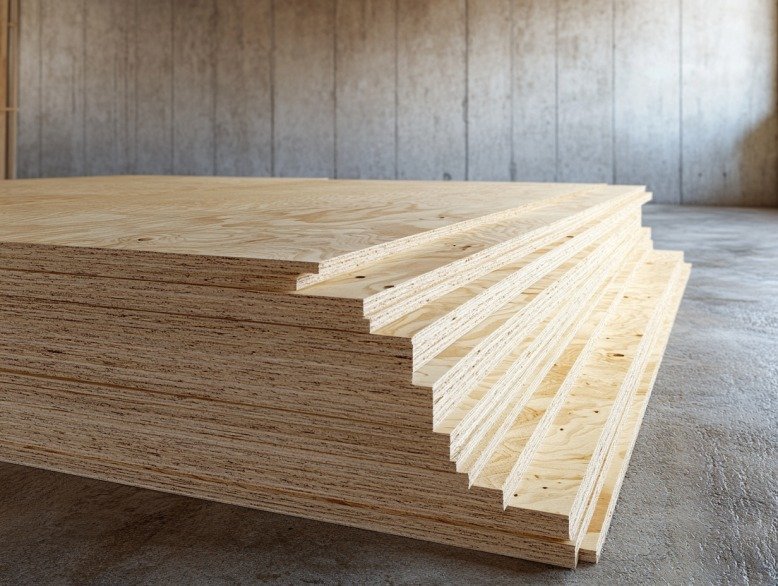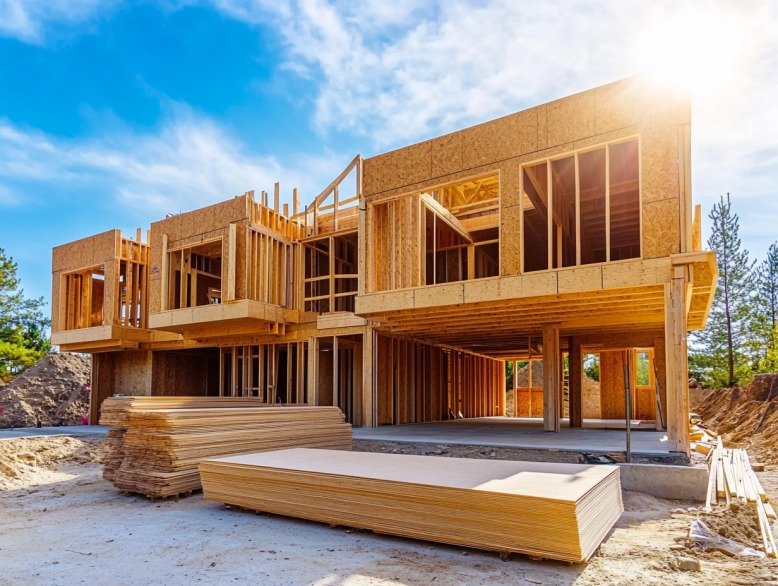
Plywood is a versatile engineered wood product commonly used in construction, furniture, and home improvement projects. The variety of plywood sizes available is vast, and choosing the right one for your project is essential for efficiency and cost-effectiveness. In this article, we’ll explore the standard plywood sizes and how to select the best one for your needs.
Plywood commonly comes in standard 4×8 feet sheets, but it is also available in custom sizes based on specific project requirements. Knowing the right plywood size is essential for a successful project.
Choosing the right plywood size isn’t just about picking a random sheet. It’s about making sure the dimensions align with your project’s needs. Let’s take a deeper dive into the common sizes of plywood and how to choose the best one for your specific application.
✔
While 4×8 feet is the most common size, plywood can be custom-made in various sizes depending on specific project requirements.
✖
Larger sheets, while offering more coverage, are more challenging to transport and require more manpower to handle and install.
Standard Plywood Sizes

The standard size for plywood sheets is typically 4 feet by 8 feet (1220mm x 2440mm). This size is used extensively in construction, home renovation, and furniture projects because it strikes a balance between ease of transport and coverage. Most plywood thicknesses range from 1/8 inch (3mm) to 1 inch (25mm), with the most common being 1/4 inch (6mm), 1/2 inch (12mm), and 3/4 inch (18mm).
Choosing the right thickness depends on the specific use. For example, thicker plywood is necessary for structural applications, such as floors and roofs, while thinner plywood is suitable for walls, ceilings, and decorative panels. If you’re doing a large project like building a house, 4×8 sheets of plywood are often the most efficient size to cover larger areas quickly.Learn more about plywood sizes here
✖
Different countries or regions may use slightly different standard sizes. For example, the 4×8 feet sheet is common in the U.S., but Europe and Asia might use slightly different dimensions.
✔
Plywood thickness can be customized based on project needs, ranging from very thin sheets for decorative purposes to thick plywood used for heavy-duty applications.
Variation in Plywood Sizes

While 4×8 feet is the most common plywood size, you can also find plywood sheets in larger or smaller dimensions based on specific needs. For instance, sheets that are 5 feet wide by 5 feet long or 5 feet by 8 feet are available and are typically used for larger construction projects where fewer seams are desired. These custom sizes reduce the need for multiple sheets and are more efficient for big jobs.
Additionally, industries that need plywood for specialized applications—like boat building, automobile manufacturing, or certain types of high-performance construction—may require custom plywood sizes and thicknesses. These non-standard sizes ensure that the material fits specific, often unique, project needs and spaces.Discover more plywood variations at PlyGem.
✖
Custom plywood sizes are quite common, especially for large-scale projects or when specific dimensions are needed to avoid waste and reduce cutting.
✔
Whether standard or custom-sized, plywood must meet building regulations to ensure safety and structural integrity.
How to Choose the Right Plywood Size
When selecting plywood, it’s important to consider factors such as the scope of your project, how often you will use the material, and the specific space or structure being built. Here are some tips to help guide your decision:
-
Project Scope: If you’re working on a small project, such as building a table or bookshelf, smaller sizes may be more practical. For larger applications like flooring or wall sheathing, standard 4×8 sheets are often more efficient.
-
Space Constraints: Custom sizes can save time and reduce the need for multiple cuts, especially in smaller spaces.
-
Thickness: Plywood thickness varies based on the structural requirements of the project. Thicker plywood is required for load-bearing applications, while thinner plywood is better suited for decorative or non-structural uses.
Considering these factors will ensure you choose the appropriate size, saving both time and money in your project.
✔
While custom plywood sizes may cost a little more than standard sizes, the cost savings in reduced cutting, transportation, and waste often make them a cost-effective choice for larger or specialized projects.
✖
While larger sheets reduce the number of seams, smaller sheets can be more manageable, easier to transport, and better suited for smaller spaces.
Common Non-Standard Plywood Sizes and Uses
Although 4×8 feet plywood sheets are the most common, you can also find other sizes, especially for specific applications. Here are some commonly used non-standard plywood dimensions:
- 5×5 feet: Often used for large-scale construction projects such as commercial buildings and roofing where larger panels can reduce the number of seams.
- 5×8 feet: Used in applications like large furniture or for covering more surface area with fewer sheets.
- 3×6 feet: Ideal for small furniture pieces, cabinets, or decorative projects where the space is more confined.
Custom sizes help reduce cutting and waste, making them more cost-effective in certain cases, especially for projects like cabinetry, furniture making, and large commercial construction.
✔
While custom plywood sizes may cost a little more than standard sizes, the cost savings in reduced cutting, transportation, and waste often make them a cost-effective choice for larger or specialized projects.
✖
Larger sheets reduce the number of seams, but smaller sheets are often more manageable, easier to transport, and better for tighter spaces.
Conclusion
Understanding the different sizes of plywood and how to choose the right one is key to any construction, renovation, or DIY project. While the standard 4×8 feet size fits most needs, larger or smaller sheets may be better suited for particular tasks. By considering the scope of your project, the space constraints, and the thickness requirements, you can select the ideal plywood size that saves time and money, ensuring a successful outcome. Whether you go with standard sizes or opt for custom dimensions, choosing the right plywood is essential for a smooth and cost-effective project.
